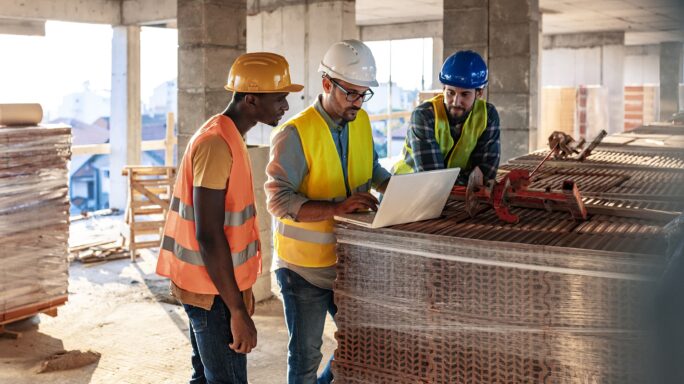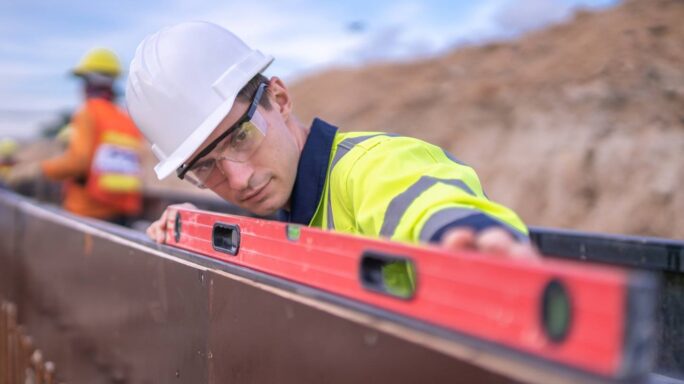Technology & Innovation
A glimpse at your construction future is here today

Construction is on the cusp of major transformation, according to many industry experts. A variety of forces are behind this change. Cost overruns, worker shortages, environmental issues, and safety concerns are driving the need to think differently about how construction has always been done. What’s more, advancing technology is now making it possible to actually consider a different approach.
What will this transformation look like in the not-so-distant future? Let’s take a look at a likely scenario:
Workers walk onto a job site and are instantly logged in and tracked as they perform their tasks. They wear “smart” hardhats that feed them vital work instructions and “clothing” that makes them stronger while measuring their biometrics. Robots lend a hand, especially for dangerous and repetitive work. Crews install building components prefabricated with 3D printers and use materials that can repair themselves, store and generate solar energy, and even “sweat” to cool a building. Self-operating equipment excavates, hauls, and dumps with little human intervention. Overhead, drones monitor and send status reports to those overseeing construction progress. A well-vetted building information model guides activity on-site and collects as-built details for future facility management.
If any of this seems far-fetched, think again. The basis for much of what I’ve described is already happening.
Smart wearables
I saw my first exoskeleton, then slated for medical rehab use, at an innovation conference in 2014. It was impressive! Today some manufacturers are developing these bionic suits specifically for construction to reduce the risk of back and other musculoskeletal injuries.
That’s not all. Already on some job sites, smart helmets and glasses use augmented reality to enhance a worker’s view of the real world. These smart wearables can feed visual instructions or video chat with an expert, all within a worker’s field of vision.
Even everyday safety vests are getting into the act with built-in GPS trackers and sensors that can set off alarms to warn a worker of unsafe conditions.
Robo crews
Meet SAM, one of the first robots to set “foot” on a job site. SAM stands for semi-automated mason and the robot is already being used by some construction companies to significantly speed up brick laying. According to the robot’s creator, Construction Robotics, SAM works alongside other masons to increase overall productivity by three to five times.
Will robots completely replace human construction workers? Not likely say many experts. Unlike manufacturing and farming where tasks are more predictable and repetitive—the ideal situation for robots—every construction job is different with its own set of unique challenges.
3D printing
An office building in Dubai. A five-story apartment in China. A hotel extension in the Philippines. A 2,400 square-foot luxury home in upstate New York. All were constructed using 3D printing. Enough said.
Ground-breaking building materials
According to the World Economic Council’s recent report “Shaping the future of construction,” there is a wide range of innovation emerging from the building materials industry. Among those innovations are:
- Self-healing concrete which is estimated to reduce life-time cost by up to 50%.
- Rain-absorbing roof mats that imitate the process of perspiration to essentially cool a building.
Solar technology is also being built into building materials such as cladding, roofing, even windows and skylights to reduce energy costs.
Driverless equipment
Heavy equipment companies are pulling out all the stops. Using GPS technology, machine learning and remote control they are transforming traditional backhoes, dump trucks and other equipment into autonomous machines. These unmanned vehicles are already being used in mining. The construction site—while more challenging—is next.
Drones—part two
Drones are no longer a novelty and their use is moving beyond mere video and picture taking. Contractors today regularly use drones to track job progress, inspect hard-to-reach places, and monitor safety compliance. The data gathered by drones is also being looked at to improve current processes on the job site.
BIM
Building information modeling is on a roll. Models are now being connected to schedules to determine appropriate resource planning, identify potential bottlenecks, and develop phasing plans. Cost estimating is also being integrated with models to speed up estimating tasks, explore cost saving strategies, and conduct cost risk analysis. All of this is aimed at better planning for more efficient construction.
New age construction companies
Some big names in construction are pushing aside the old ways and replacing them with a focus on innovation. They are testing new techniques, adding innovation leaders to their payrolls, and boldly stepping into the future.
What does your construction future look like?
Editor’s note: This article was originally published in June 2017 and has been updated.








Ask the author a question or share your advice